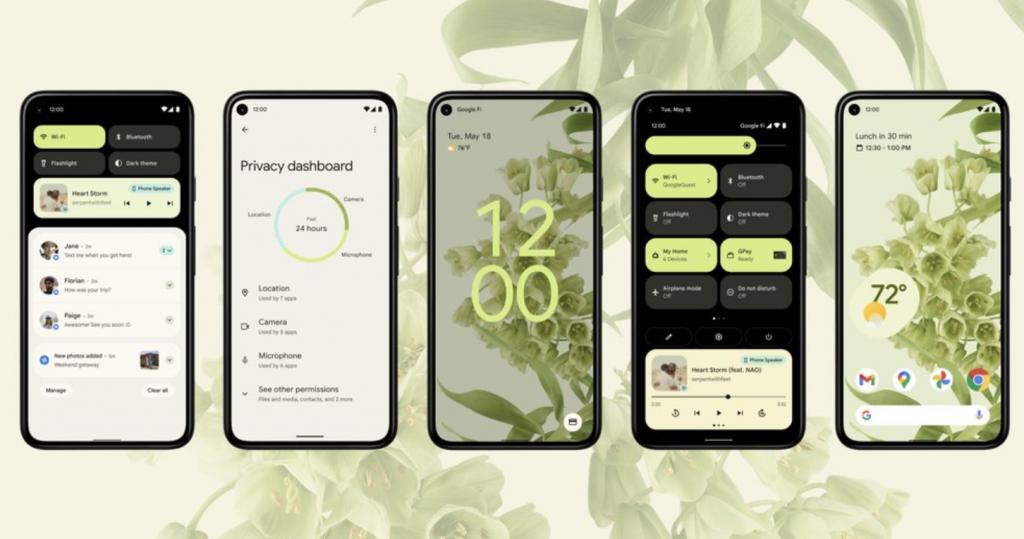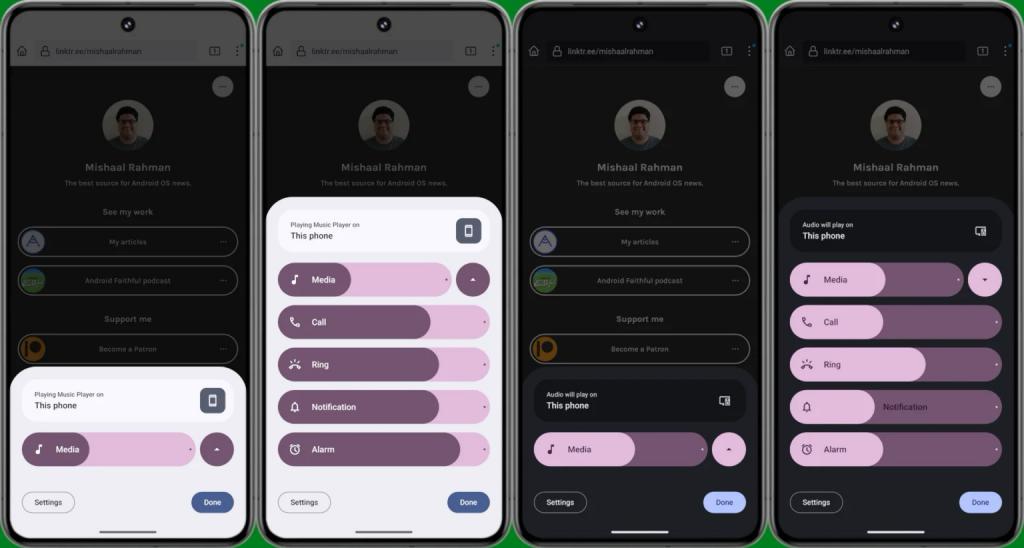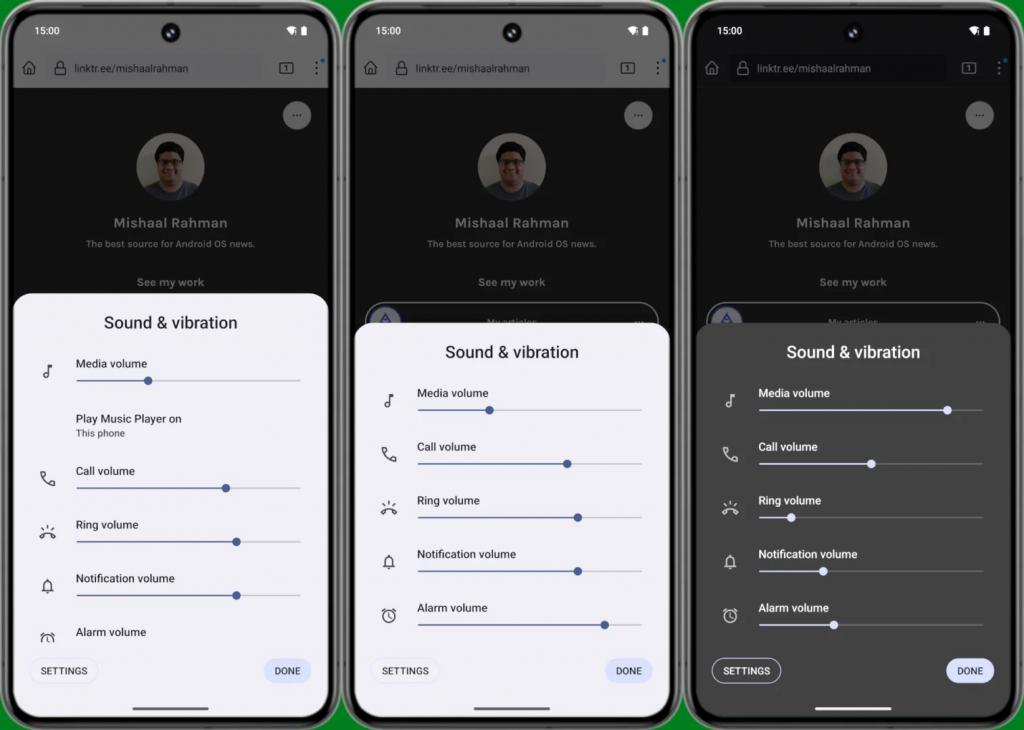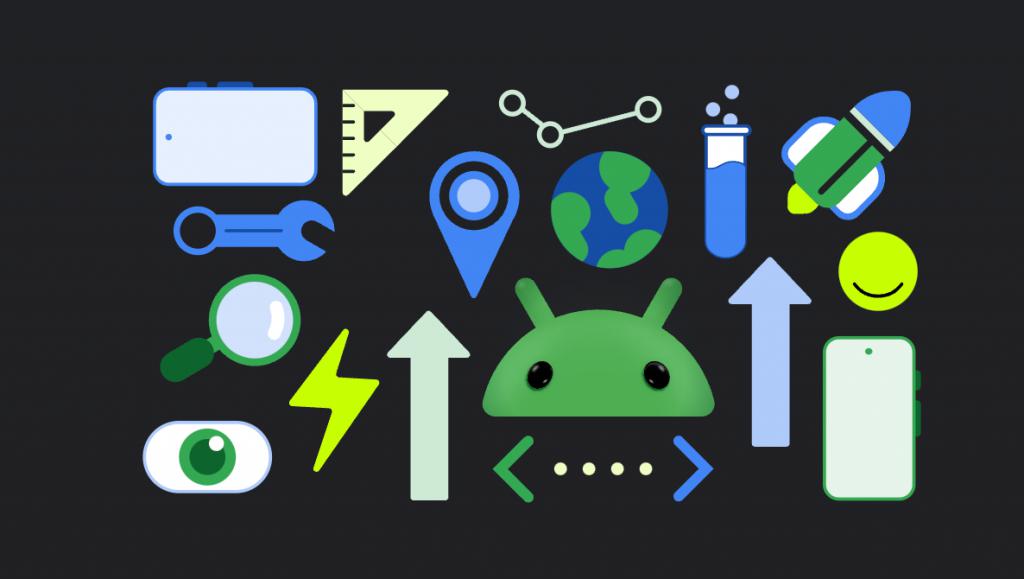 Hardware Tutorial
Hardware Tutorial
 Hardware Review
Hardware Review
 Android 15 re-exposure: new adjustments to the volume control panel UI, or native integration of satellite communications
Android 15 re-exposure: new adjustments to the volume control panel UI, or native integration of satellite communications
Android 15 re-exposure: new adjustments to the volume control panel UI, or native integration of satellite communications
Google introduced the design language Material You in Android 12. In the subsequent versions, Google has made some tweaks to its design to suit different devices and user needs. In the future, in Android 15, Google will bring major UI changes to the volume adjustment panel, which will improve user experience and improve functionality.

In the latest Android 15 Developer Preview 2 version, the new volume panel UI can be manually activated. The controls have a thicker slider bar with a point at the end of the slider to quickly crank up the volume, and icons within the bar area to quickly mute sound.

#Android 15’s new volume panel is collapsible. Clicking the button next to the media volume slider will collapse or expand the panel. The volume panel is collapsed by default whenever there is active media playback. Otherwise, it will open in the fully expanded state.
The "Sounds and Vibration" heading in the volume adjustment panel of Android 14 also disappears in Android 15, replaced by a media output shortcut.

# Google has also added some animations to the new Android 15 volume panel. The control name text moves with the slider, so users can always see the control name when adjusting the volume level. At the same time, when you move the slider, the current volume level is also displayed at the location of the icon.
In addition to the new design, the volume panel will also display additional controls such as spatial audio and "noise control."

In addition, in addition to the UI adjustments to the volume panel, there is also news that Android 15 may bring native support for satellite communication functions.
It is reported that Google recently brought Android 14 PQ3 Beta 1, in which information related to native satellite communication functions appeared. That said, Google is developing native satellite communications capabilities for Android. However, the specific application of this feature should still be more likely to appear in Android 15.

According to the revelations, the semi-finished code shows a "Satellite Message" option included in the system settings, and this option also includes "Via Satellite" "Send and receive text messages" feature introduction information.
In other words, in the Android 15 update, Google should provide native satellite communication options for more devices. This should also help more mobile phone manufacturers support satellite communication functions in the future.

In addition, in addition to software-level updates, Google’s Pixel series of mobile devices will also bring new products in the future.
In January this year, renderings claiming to be Google’s Pixel 9 and Pixel 9 Pro appeared online. But now the latest news reveals that these devices are actually the Google Pixel 9 Pro and Pixel 9 Pro XL.
In other words, Google will launch an "XL" version this year, the first time since the Google Pixel 5 series.
At the same time, the renderings of Google Pixel 9 have also been exposed.

Based on the renderings, the overall design of Google Pixel 9 is similar to that of the previously exposed Pixel 9 Pro. The front adopts a central hole-punch straight screen design with a right-angle mid-frame solution. , the power button and the volume button are located on the right side of the phone's frame.

#At the same time, the rear camera module on the back of the new phone adopts a pill-shaped design. However, the Pixel 9 has a dual-camera setup compared to the Pro model's triple-camera system.
The above is the detailed content of Android 15 re-exposure: new adjustments to the volume control panel UI, or native integration of satellite communications. For more information, please follow other related articles on the PHP Chinese website!

Hot AI Tools

Undresser.AI Undress
AI-powered app for creating realistic nude photos

AI Clothes Remover
Online AI tool for removing clothes from photos.

Undress AI Tool
Undress images for free

Clothoff.io
AI clothes remover

AI Hentai Generator
Generate AI Hentai for free.

Hot Article

Hot Tools

Notepad++7.3.1
Easy-to-use and free code editor

SublimeText3 Chinese version
Chinese version, very easy to use

Zend Studio 13.0.1
Powerful PHP integrated development environment

Dreamweaver CS6
Visual web development tools

SublimeText3 Mac version
God-level code editing software (SublimeText3)

Hot Topics
 1371
1371
 52
52
 How to comment deepseek
Feb 19, 2025 pm 05:42 PM
How to comment deepseek
Feb 19, 2025 pm 05:42 PM
DeepSeek is a powerful information retrieval tool. Its advantage is that it can deeply mine information, but its disadvantages are that it is slow, the result presentation method is simple, and the database coverage is limited. It needs to be weighed according to specific needs.
 How to search deepseek
Feb 19, 2025 pm 05:39 PM
How to search deepseek
Feb 19, 2025 pm 05:39 PM
DeepSeek is a proprietary search engine that only searches in a specific database or system, faster and more accurate. When using it, users are advised to read the document, try different search strategies, seek help and feedback on the user experience in order to make the most of their advantages.
 Sesame Open Door Exchange Web Page Registration Link Gate Trading App Registration Website Latest
Feb 28, 2025 am 11:06 AM
Sesame Open Door Exchange Web Page Registration Link Gate Trading App Registration Website Latest
Feb 28, 2025 am 11:06 AM
This article introduces the registration process of the Sesame Open Exchange (Gate.io) web version and the Gate trading app in detail. Whether it is web registration or app registration, you need to visit the official website or app store to download the genuine app, then fill in the user name, password, email, mobile phone number and other information, and complete email or mobile phone verification.
 Why can't the Bybit exchange link be directly downloaded and installed?
Feb 21, 2025 pm 10:57 PM
Why can't the Bybit exchange link be directly downloaded and installed?
Feb 21, 2025 pm 10:57 PM
Why can’t the Bybit exchange link be directly downloaded and installed? Bybit is a cryptocurrency exchange that provides trading services to users. The exchange's mobile apps cannot be downloaded directly through AppStore or GooglePlay for the following reasons: 1. App Store policy restricts Apple and Google from having strict requirements on the types of applications allowed in the app store. Cryptocurrency exchange applications often do not meet these requirements because they involve financial services and require specific regulations and security standards. 2. Laws and regulations Compliance In many countries, activities related to cryptocurrency transactions are regulated or restricted. To comply with these regulations, Bybit Application can only be used through official websites or other authorized channels
 Sesame Open Door Trading Platform Download Mobile Version Gateio Trading Platform Download Address
Feb 28, 2025 am 10:51 AM
Sesame Open Door Trading Platform Download Mobile Version Gateio Trading Platform Download Address
Feb 28, 2025 am 10:51 AM
It is crucial to choose a formal channel to download the app and ensure the safety of your account.
 gate.io exchange official registration portal
Feb 20, 2025 pm 04:27 PM
gate.io exchange official registration portal
Feb 20, 2025 pm 04:27 PM
Gate.io is a leading cryptocurrency exchange that offers a wide range of crypto assets and trading pairs. Registering Gate.io is very simple. You just need to visit its official website or download the app, click "Register", fill in the registration form, verify your email, and set up two-factor verification (2FA), and you can complete the registration. With Gate.io, users can enjoy a safe and convenient cryptocurrency trading experience.
 Binance binance official website latest version login portal
Feb 21, 2025 pm 05:42 PM
Binance binance official website latest version login portal
Feb 21, 2025 pm 05:42 PM
To access the latest version of Binance website login portal, just follow these simple steps. Go to the official website and click the "Login" button in the upper right corner. Select your existing login method. If you are a new user, please "Register". Enter your registered mobile number or email and password and complete authentication (such as mobile verification code or Google Authenticator). After successful verification, you can access the latest version of Binance official website login portal.
 Top 10 recommended for crypto digital asset trading APP (2025 global ranking)
Mar 18, 2025 pm 12:15 PM
Top 10 recommended for crypto digital asset trading APP (2025 global ranking)
Mar 18, 2025 pm 12:15 PM
This article recommends the top ten cryptocurrency trading platforms worth paying attention to, including Binance, OKX, Gate.io, BitFlyer, KuCoin, Bybit, Coinbase Pro, Kraken, BYDFi and XBIT decentralized exchanges. These platforms have their own advantages in terms of transaction currency quantity, transaction type, security, compliance, and special features. For example, Binance is known for its largest transaction volume and abundant functions in the world, while BitFlyer attracts Asian users with its Japanese Financial Hall license and high security. Choosing a suitable platform requires comprehensive consideration based on your own trading experience, risk tolerance and investment preferences. Hope this article helps you find the best suit for yourself



